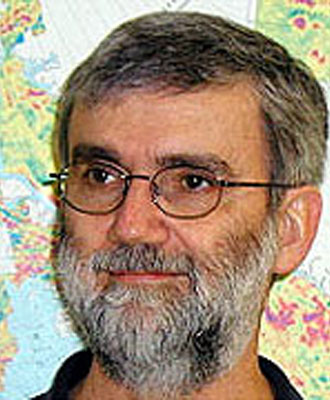Abstract
Seismic data is arguably always nonstationary in its Fourier spectral character since anelastic attenuation processes are present everywhere. The major mathematical tool for dealing with this effect in seismic data processing is the Wiener deconvolution algorithm, which is at least a half century old. Paradoxically, this algorithm assumes that the seismic time series is stationary. Nevertheless, Wiener's algorithm deals with a limited class of attenuation effects in an average sense. When posed in the Fourier domain, the algorithm suggests its own generalization using a nonstationary extension of the Fourier transform such as the Gabor transform.
A simple computational scheme for the Gabor transform is presented that is based on a set of windows that form a partition of unity. The use of the Gabor transform in a nonstationary deconvolution scheme is enabled because it factorizes the nonstationary convolutional model for a seismic trace with attenuation. The Gabor transform of a seismic signal is shown to be given approximately by the product of the Fourier transform of the source signature, the time-frequency attenuation function, and the Gabor transform of the reflectivity. Gabor deconvolution smoothes the Gabor magnitude spectrum of the seismic signal to estimate the product of the magnitudes of the attenuation function and the source signature. A phase function is then estimated using the minimum phase assumption. The result is a complex-valued, time-frequency function that we call the spectrum of the propagating wavelet. When the original Gabor spectrum is divided by this time-frequency spectrum of the propagating wavelet, the result is an estimate of the Gabor spectrum of the reflectivity. Testing on nonstationary synthetic signals shows that Gabor deconvolution is dramatically effective in producing a very broadband reflectivity estimate, far better than Wiener's algorithm. Testing on real data also shows very highly resolved images from Gabor deconvolution. When compared with a "standard" image created using surface-consistent Wiener deconvolution together with time-variant spectral whitening, the Gabor images show subtle enhancement of detail and greater robustness in the presence of coherent noise and coverage gaps.
Biography
Gary Margrave is Associate Professor of Geophysics and Mathematics at the University of Calgary. He is also Associate Director of CREWES and the U of C Site Director for PIMS. Before joining the University of Calgary in 1995, he spent fifteen years with Chevron Corporation where he held a variety of geophysical positions. He obtained his Ph.D. in geophysics from the University of Alberta in 1981. Dr. Margrave's expertise is in the research, teaching and application of exploration seismology, including seismic data processing, migration and mathematical signal theory. His research interests include signal band estimation, seismic attenuation, deconvolution, imaging and seismic wave propagation.





